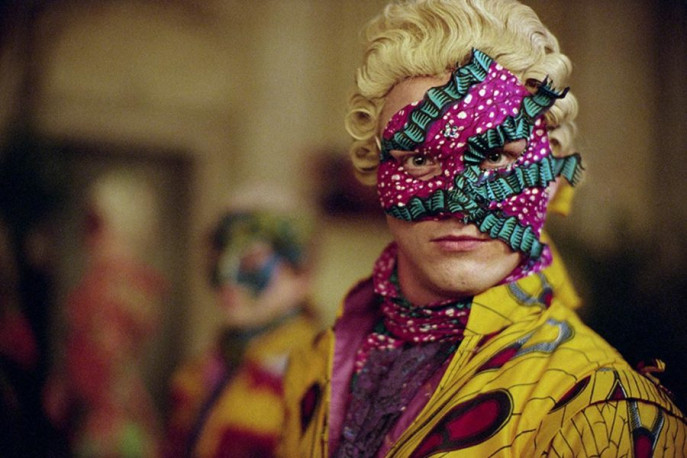
by: Ellen C. Caldwell
for JSTOR Daily
The Los Angeles County Museum of Art (LACMA)’s exhibit “Senses of Time” focuses on five African artists working with film, including the work of Berni Searle, Sammy Baloji, Theo Eshetu, Moataz Nasr, and Yinka Shonibare.
Anthony Downey interviewed Yinka Shonibare, MBE to learn more about the artist’s first film which LACMA featured. In Un Ballo in Maschera, (A Masked Ball) 2004, Shonibare dramatically tells the story of the Swedish King Gustav’s assassination in 1792. Un Ballo in Maschera provides a postcolonial, revisionist feast for the eyes and political choose-your-own adventure that plays with the slipperiness and unfixed nature of both identity-making and history-telling. True to Shonibare’s usual style, themes, and aesthetic, he explores the ambiguities of race, identity, class, and gender in a nonconventional, choreographed film featuring high fashion and zero dialogue. (Warning: the following film clip includes stage gunshots.)
Shonibare’s actors wear elaborate costumes featuring fashion styles of the 1800s, cut from completely foreign fabric. Downey introduces Shonibare’s use of Dutch wax fabric, a tell-tale sign of Shonibare’s work and one that continues to trouble viewers’ often-fixed notions of identity and authenticity…
